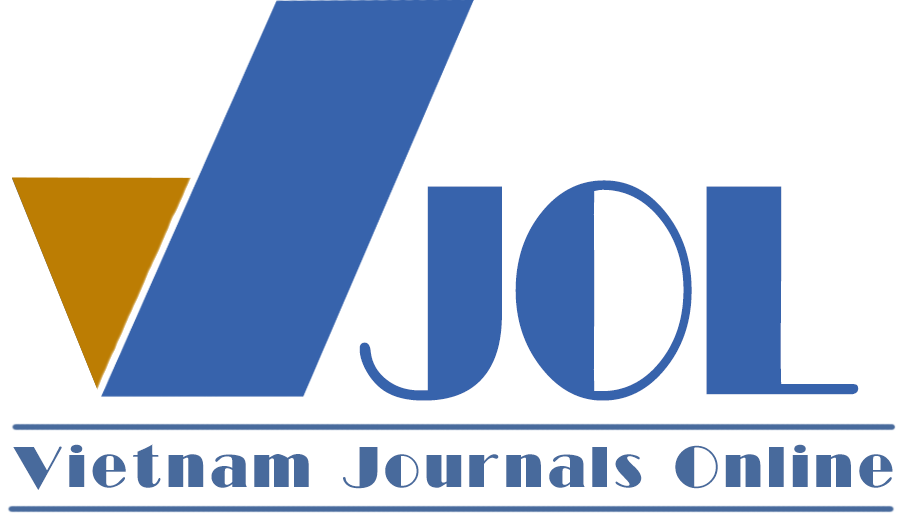BUILDING ELECTRONIC LEARNING MATERIALS IN TEACHING "HYDROCARBON" TO DEVELOP SELF–STUDY COMPETENCE FOR 11th GRADE STUDENTS
DOI:
https://doi.org/10.18173/2354-1075.2025-0061Keywords:
self-study competence, electronic learning materials, hydrocarbon, vocational education and continuing education centersAbstract
Self-study is one of the competencies that plays an important role in students' lifelong learning. This article investigated the current status of using electronic learning materials in chemistry teaching to develop students' self-study competence. Based on the findings, we have built the electronic learning material "Hydrocarbon", provided a table describing the manifestations of self-study competence as a basis for building assessment tools. Then, we have designed a lesson plan using electronic learning materials in teaching and conducted a pedagogical experiment at the Vocational Education - Continuing Education Centers District 4. The results showed that after the experiment, the average test score and the rate of students showing self–study competence at a good level or higher (level 3) increased compared to before the experiment. Therefore, the use of electronic learning materials in teaching has contributed to developing students’ self-study competence.
Downloads
References
[1] Thái, L. Q. (2019). Xây dựng khung năng lực tự học và đánh giá thực trạng tự học của học sinh trung học phổ thông. Journal of Science Educational Science, 64(9), 188–197. https://doi.org/10.18173/2354-1075.2019-0124
[2] Abbas, B. A., & Mohammad, Y. A. (2015). Self-directed learning and skills of problem-based learning: A case of Nigerian secondary schools chemistry students. International Education Studies, 8(12), 70–78. https://doi.org/10.5539/ies.v8n12p70
[3] Mohd, M. I., Mohammad, Y. A., Mohd, S. R., & Nurbiha, A. S. (2017). The roles of teacher and students in self-directed learning process through blended problem-based learning. Sains Humanika, 9, 27–32.
[4] Fatma, A., & Canan, K. A. (2018). The effect of hands-on chemistry experiments on self-directed learning readiness. Education and Social Sciences. Journal of International Scientific Research, 88–94.
[5] Trang, N. H., & Thơm, B. T. (2023). Tổ chức dạy học chủ đề “Liên kết hóa học” theo mô hình “lớp học đảo ngược” nhằm phát triển năng lực tự học cho học sinh. Tạp chí Giáo dục, 23(7), 19–23.
[6] Em, V. V. D., Anh, N. T. K., & Ngan, H. T. K. (2024). Developing self-learning ability for students through teaching “The periodic table of elements” in Chemistry 10 applying the flipped classroom model. HNUE Journal of Science, 69(3), 162–171. https://doi.org/10.18173/2354-1075.2024-0057
[7] Liên, N. T. P., Trường, N. X., & Giác, C. C. (2020). Sử dụng bài tập tự học phần tốc độ phản ứng và cân bằng hóa học nhằm bồi dưỡng năng lực tự học môn hóa học cho học sinh lớp 10 trung học phổ thông. Ho Chi Minh City University of Education Journal of Science, 17(2), 235–253.
[8] Nhung, Đ. T. K., & Bình, P. T. (2018). Thiết kế tài liệu hướng dẫn tự học môn hóa học cho học sinh trung học phổ thông. Science Journal of Hanoi Metropolitan University, 21, 94–105.
[9] Đại, N. V., Anh, Đ. T. V., & Trung, V. Q. (2020). Thực trạng vấn đề tự học, phát triển năng lực tự học và vận dụng mô hình Blended Learning trong dạy học hóa học ở trường trung học phổ thông. HNUE Journal of Science, 65(9), 203–217. https://doi.org/10.18173/2354-1075.2020-0106
[10] Hà, N. T. (2023). Xây dựng và sử dụng học liệu số trong dạy học “Sinh học vi sinh vật và virus”. Tạp chí Khoa học và Công nghệ Đại học Thái Nguyên, 228(12), 212–220.
[11] Allison, L., Isobel, F., & Lou, M. (2008). Characterising effective eLearning resources. Computers and Education, 50(3), 757–771. https://doi.org/10.1016/j.compedu.2006.08.004
[12] Wong, Y. H. (2018). The use of e-resources and innovative technology in transforming traditional teaching in chemistry and its impact on learning chemistry. International Journal of Interactive Mobile Technologies, 12(7), 86–96. https://doi.org/10.3991/ijim.v12i7.9666
[13] Albina, R. D. Z., & Elvira, G. S. (2020). Usage of digital educational resources in teaching students with the application of “Flipped classroom” technology. Contemporary Educational Technology, 12(2), 1–13. https://doi.org/10.30935/cedtech/8582
[14] Đào, M. X., & Thủy, P. Đ. C. (2020). Xây dựng và sử dụng học liệu điện tử theo mô hình lớp học đảo ngược nhằm phát triển năng lực tự học cho học sinh THPT ở Tân Uyên, tỉnh Bình Dương. Ho Chi Minh City University of Education Journal of Science, 17(8), 1421–1429.
[15] Ánh, N. T. K., & Trinh, D. T. T. (2020). Phát triển năng lực tự học cho học sinh thông qua học liệu điện tử về nguyên tố nhóm VIIA. HNUE Journal of Science, 65(7), 219–229. https://doi.org/10.18173/2354-1075.2020-0092
[16] Anh, N. T. L., Phúc, T. H., Dung, T. T. N., & Ngân, N. P. T. (2023). Sử dụng học liệu số “SC Web” phần Hóa học Hữu cơ lớp 11 nhằm phát triển năng lực tự học cho học sinh. Tạp chí Giáo dục, 23(23), 18–23.
[17] Ellen, O. S. (2003). Self-directed learning in nurse education: A review of the literature. Journal of Advanced Nursing, 43(1), 62–70.
[18] Hùng, Đ. V., Đức, N. M., & Kiệt, N. V. (2024). Xây dựng và sử dụng học liệu số nhằm phát triển năng lực tự học cho học sinh qua chủ đề “Hydrocarbon - Hóa học 11”. Tạp chí Khoa học và Công nghệ Đại học Thái Nguyên, 229(12), 202–211. https://doi.org/10.34238/tnu-jst.8398
[19] Minh, T. H., Trang, N. T. T., & Tuấn, N. M. (2024). Vận dụng mô hình lớp học đảo ngược trong học phần Hóa học Đại cương 1 nhằm phát triển năng lực tự học cho sinh viên sư phạm hóa học. Tạp chí Khoa học Trường Đại học Sư phạm TP. Hồ Chí Minh, 21(1). https://doi.org/10.54607/hcmue.js.21.1.4011
[20] Đại, N. V., & Anh, Đ. T. V. (2019). Xây dựng khung năng lực tự học của học sinh trung học phổ thông trong dạy học hóa học theo mô hình Blended Learning. Tạp chí Giáo dục, 458(2).
[21] Bộ Giáo dục và Đào tạo. (2018). Chương trình Giáo dục phổ thông - Chương trình tổng thể, 1–53.
[22] Pinar, K. (2024). Effects of using rubrics in self-assessment with instructor feedback on pre-service teachers’ academic performance, self-regulated learning and perceptions of self-assessment. European Journal of Psychology of Education, 2551–2574.
[23] Phương, T. L. H. (2012). Xây dựng học liệu điện tử hỗ trợ việc dạy và học một số nội dung hóa học ở trường trung học phổ thông. Tạp chí Khoa học Đại học Sư phạm TP. Hồ Chí Minh, 37.
[24] Anh, N. N. Q. (2023). Quản lí sử dụng học liệu điện tử trong dạy học ở các trường trung học phổ thông công lập quận Bình Thạnh, thành phố Hồ Chí Minh. Tạp chí Khoa học Quản lí Giáo dục, (Số đặc biệt), 94–101.
[25] Lau, S. E., & Nor, A. I. (2022). The use of technological tools towards enhancing understanding in chemical equilibrium and self-directed learning among form six students. Institut Penyelidikan Guru, 20(1), 1–32.
[26] Trinh, M. V. (2016). Thiết kế bài dạy - Tự học trên lớp với sự hỗ trợ của E-Learning. Tạp chí Khoa học Giáo dục, 124.







